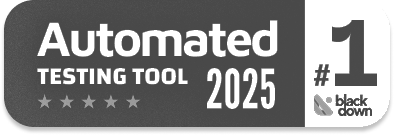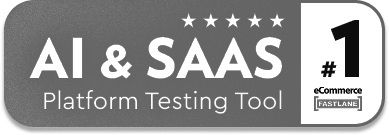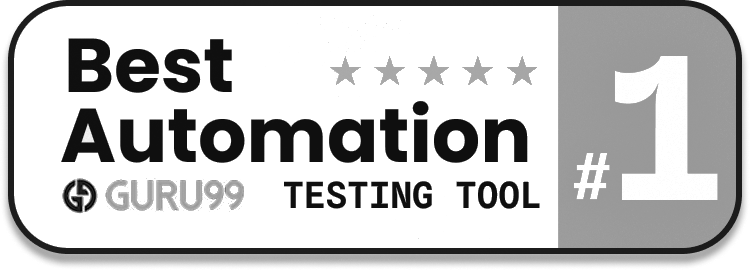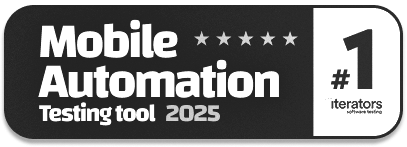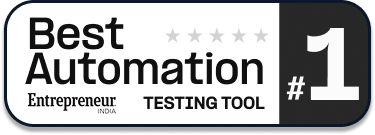What is WAgile? Understanding the Hybrid Waterfall-Agile Approach
|
|
The Waterfall and Agile methodologies are quite popular in the software industry. Both are distinct in their own ways. We’ve got a trend on our hands that combines these two approaches – WAgile. It’s not about choosing one over the other, but about taking the most valuable parts of each and combining them into a powerful, single workflow. The main goal of WAgile is to leverage the robust, up-front planning of Waterfall while gaining the iterative flexibility and responsiveness of Agile for the development phase.
This approach is becoming increasingly relevant for organizations managing large, complex projects or for traditional companies that are trying to transition to a more flexible model without abandoning their foundational processes. Let’s learn more about it.
| Key Takeaways: |
|---|
|
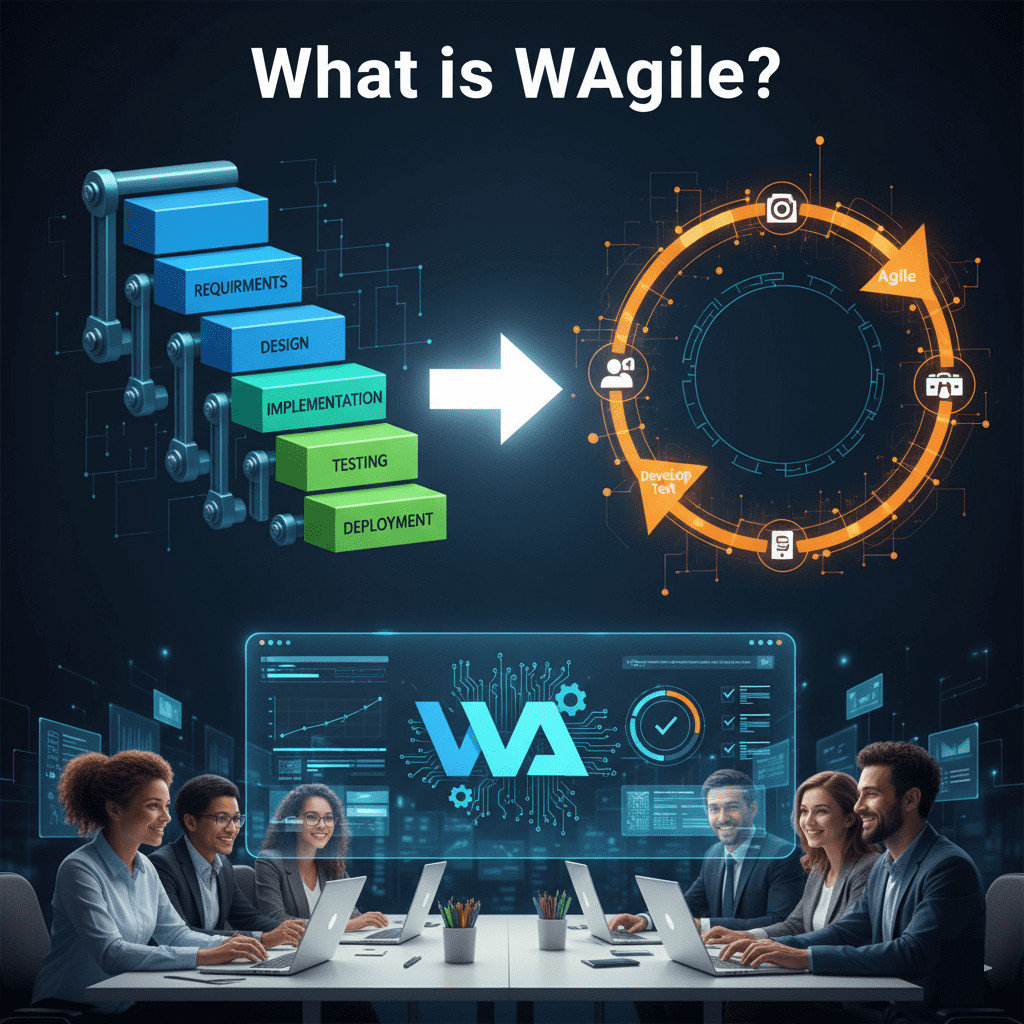
The Two Halves of WAgile
To understand WAgile, you first have to understand the two core methodologies from which it’s built. Let’s take a quick look at how each one works.
The Structured Half: Waterfall
Most people think of the waterfall methodology when they picture traditional project management. It’s a sequential, linear process, much like a waterfall flowing downward. Each phase—from requirements gathering and design to implementation and testing—must be fully completed before the project can proceed to the next.
- Strengths: This approach is excellent for projects with precise, unchanging requirements. It provides a ton of structure, with strong documentation, predictable timelines, and very clear roles for everyone involved.
- Weaknesses: The biggest downside is a complete lack of flexibility. If you need to make a change halfway through the process, it can be incredibly difficult and expensive. You don’t get any feedback until the very end, and if any issues are found in the testing phase, you can send the entire project back to the drawing board.
Learn more about the Waterfall method over here: Waterfall Project Management Methodology: Principles and Practices.
The Flexible Half: Agile
Agile is the opposite of Waterfall. It’s an iterative and incremental approach that focuses on short development cycles, called “sprints”. The core principles are collaboration, responding to change, and delivering value to the customer quickly and often.
- Strengths: The adaptability is unmatched. Because you’re working in small, manageable chunks, you can easily pivot based on new information or customer feedback. Agile teams can deliver working parts of a product much faster and continuously improve as they go.
- Weaknesses: On the flip side, Agile can feel less predictable. Without extensive upfront planning, it’s harder to give stakeholders a fixed deadline or budget. There’s also a potential for what’s known as “scope creep”, where the project’s features expand beyond the original vision.
Learn more about the Agile methodology:
- What is Agile Software Development?
- The Role of QA in Agile Development
- Scrum vs. Kanban vs. Lean: Choosing Your Path in Agile Development
- A Roadmap to Better Agile Testing
How WAgile Methodology Works
WAgile is about using two methodologies sequentially, allowing the strengths of one to set up the success of the other.
The Up-Front “Waterfall” Phase
The Waterfall phase is always the beginning of the project. Here is where the big, non-negotiable groundwork gets established. Your group will be particularly concerned with:
- High-Level Planning and Scope Definition: Getting a clear, written agreement on what we need the final product to do.
- Comprehensive Requirements Gathering: Identifying all critical needs and locking down the core features.
- Architectural Design: Finalizing the project’s technical framework and infrastructure.
The goal here is to establish a solid foundation, mitigating major technical risks and unknowns before any development code is written. Once this planning phase is completed and approved, the project transitions.
The Execution “Agile” Phase
Once the foundational work is done, the project switches gears into the Agile phase for execution. The overall scope is now fixed, but the path to achieving it becomes flexible.
The large project is broken down into smaller components, which are then developed using iterative sprints (typically 2-4 weeks). This allows the team to:
- Build and Test Rapidly: Developers can write code, test features, and fix bugs quickly within short cycles.
- Incorporate Feedback: Stakeholders and users can review working software at the end of each sprint, providing feedback that is incorporated into the next sprint.
This allows the team to be highly responsive to minor changes or new insights about the best way to implement the agreed-upon features.
Key Characteristics of WAgile
WAgile projects rely on a few specific principles to keep the two halves aligned:
- Fixed Scope, Flexible Execution: This is the core principle. The “What” is defined by Waterfall (the scope is fixed); the “How” is defined by Agile (the implementation is flexible). You know the destination, but you can adjust the route along the way.
- Hybrid Teams: You’ll often see teams with a mix of roles and focuses. A project might have a core group of architects and senior business analysts (focusing on the Waterfall definition) working closely with developers and Scrum Masters (focusing on the Agile execution). Clear communication and mutual respect between these groups are essential to prevent friction.
Pros and Cons of the WAgile Approach
Every methodology is a trade-off, and WAgile is no exception. While it promises to give you the best of both worlds, it also introduces its own unique set of challenges. Understanding these will help you decide if it’s the right fit.
Advantages of WAgile
WAgile excels at balancing stakeholder expectations with development reality:
- Structured Flexibility: You get the benefit of a solid, approved plan and budget from the Waterfall phase without sacrificing the ability to respond to tactical changes during development. You aren’t constantly rewriting the core architecture just because a minor feature changed.
- Predictability & Adaptability: For high-level management, the fixed scope and budget from the Waterfall foundation offer much-needed predictability. For the team, the Agile sprints offer the adaptability required to handle the messy reality of code implementation and testing.
- Easier Transition: WAgile is often a smoother transition for large, traditional organizations that are trying to move away from a purely Waterfall model. It lets them maintain their existing rigorous documentation and compliance processes while gradually introducing iterative development practices.
- Reduced Risk: The comprehensive upfront planning significantly reduces major unknowns (like architectural flaws) early on. Then, the Agile execution allows for early issue detection and smaller course corrections before they become costly crises.
Disadvantages of WAgile
The biggest risks come from trying to force two different mindsets to work together:
- Integration Challenges: The transition point – where Waterfall ends and Agile begins – can be messy. If the initial requirements aren’t perfectly handed off or the documentation is incomplete, the Agile team can spend valuable time correcting the planning phase’s flaws.
- Potential for Misalignment: The two halves of the project can operate with different rhythms and philosophies. Planning teams focus on being fixed and final, while development teams thrive on being fluid and collaborative. This difference can lead to friction and internal conflict if not managed carefully.
- Not a Silver Bullet: While powerful, WAgile isn’t suitable for all projects. It introduces a level of procedural complexity (managing two methods simultaneously) that can be overkill for simple or small-scale applications that would be better served by a pure Agile approach.
- “Fake” Agile Risk: There’s a risk that the project becomes “Wagile-in-name-only”. If the initial Waterfall planning is too detailed or rigid, it can stifle the flexibility of the Agile sprints, effectively creating a Waterfall project with a sprint veneer.
Ideal Use Cases for WAgile
WAgile shines in environments where the outcome must be predictable but the implementation path is uncertain:
- Large, Complex Projects with External Dependencies: This is the sweet spot. If you’re building a massive enterprise system, integrating with legacy hardware, or migrating large data sets, you need the initial Waterfall phase to ensure all foundational components are accounted for, documented, and aligned with legal or regulatory requirements.
- Hardware and Software Integration: When dealing with physical products, the hardware design is often fixed early on. You can’t start developing the final firmware until the physical specs are finalized. WAgile allows the hardware team to run their Waterfall track, and once those designs are locked down, the software team can transition to an Agile development loop.
- Regulated Industries: For industries like finance, healthcare, or government contracting, extensive upfront documentation, detailed design approval, and clear audit trails are non-negotiable. WAgile satisfies these contractual or compliance requirements in the initial planning phase while keeping the door open for modern, fast-paced execution.
Questions to Ask Before Choosing WAgile
Before you commit to a WAgile approach, check your project’s DNA against these key questions:
- Does your project require significant upfront planning? If stakeholders demand a fixed budget, scope, and timeline before development begins (a hallmark of Waterfall), WAgile is a strong contender. If requirements are expected to change drastically every few weeks, pure Agile is better.
- Can your initial requirements be locked down? WAgile only works if the core requirements and architectural decisions made in the Waterfall phase are stable. If the foundation is constantly shifting, the Agile execution phase will collapse.
- Is your team mature enough to handle the transition? Successfully pivoting from Waterfall planning to Agile execution requires organizational discipline, clear communication protocols, and a team that understands and respects the purpose of both methodologies.
Conclusion
WAgile can be viewed as strategically using the strengths of both Waterfall and Agile. If your business can’t be purely iterative or your projects require large amounts of pre-commitment planning and compliance, WAgile provides a clever, project-specific approach. It provides the amount of control and predictability (the “what”) that executives and regulators need upfront, alongside the development velocity and feedback loops (the “how”) necessary to satisfy engineers and end-users in motion.
| Achieve More Than 90% Test Automation | |
| Step by Step Walkthroughs and Help | |
| 14 Day Free Trial, Cancel Anytime |



